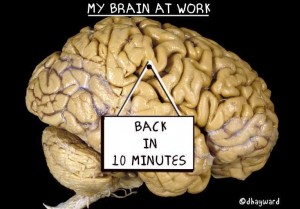Recently, I came across a survey that asked, “Which side of your brain is more dominant?” Have you taken it? What was your result?
Whatever response you received, the real answer is: both! Or, it doesn’t matter! Actually, it’s always changing!
In “The Brain that Changes Itself,” author/psychiatrist/psychoanalyst Norman Doidge talks about how the brain can and does re-wire itself according to the challenges and stimuli presented to it.
Doidge recounts the story of the dramatic recovery of Pedro Bach-y-Rita, a Catalan poet and scholar, who suffered a debilitating stroke at age 65. Pedro was aided in his recovery by his two sons, one a medical student and the other a scientist. The brothers rehabilitated their father patiently and diligently, teaching him how to walk and talk again. They were so successful after a year of work that their father eventually returned to full-time college teaching.
What was the key to his recovery? It was not that the brain had “healed,” because the damage done was irreparable. No; the brain had actually “rewired” itself! That is to say, parts of the brain that were formerly devoted to certain tasks were re-assigned to do the work of the damaged brain cells.
The phenomenon at work in this case is plasticity: the ability of the brain to re-organize itself at any stage of life. Doidge writes, “The age at which we learn a mental skill strongly influences the area in which it gets processed.”
Further debunking the left/right brain myth, neuroscientist and author Joseph LeDoux explains, “Left-Right talk in the popular media dates back to the 60s and was mostly stimulated by research on split-brain patients, patients in whom the left and right sides are literally separated. In these people, the left and right hemispheres cannot communicate. In most of us though, the two sides are closely interconnected and work together in creating our mental and behavioral capacities.” (full article here)
In short, brain researchers now posit that the purported split between right and left brain is imaginary – in reality, the two hemispheres are highly interconnected. Different people use different areas for processing things, and those areas can even change in a person’s lifetime, owing to neuroplasticity. So here’s to the complexity of the brain in its entirely whole, interconnected state.


